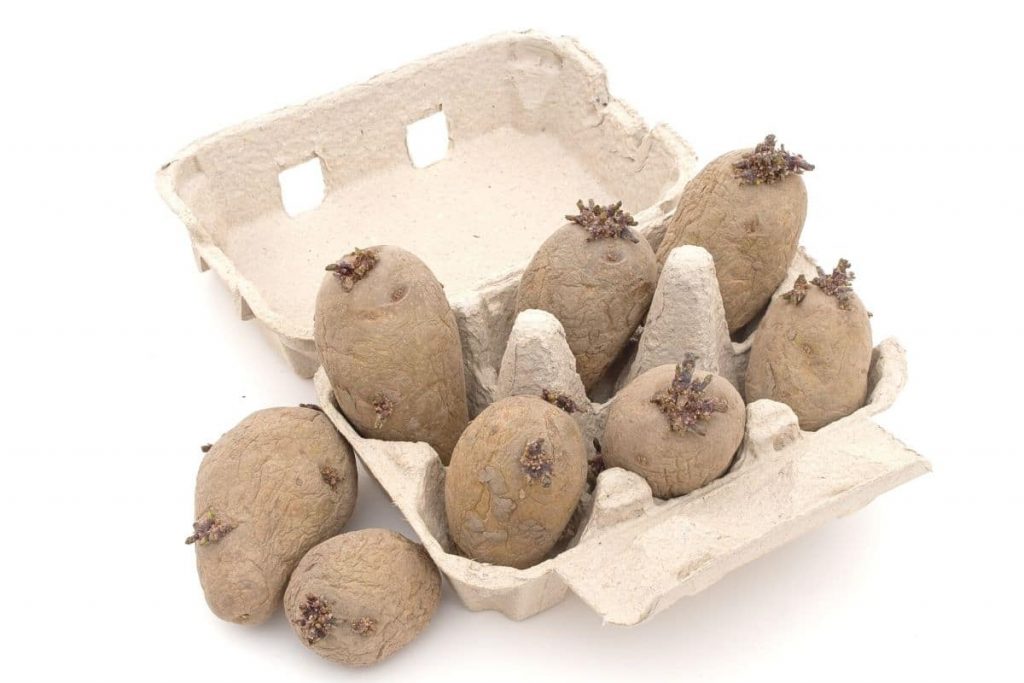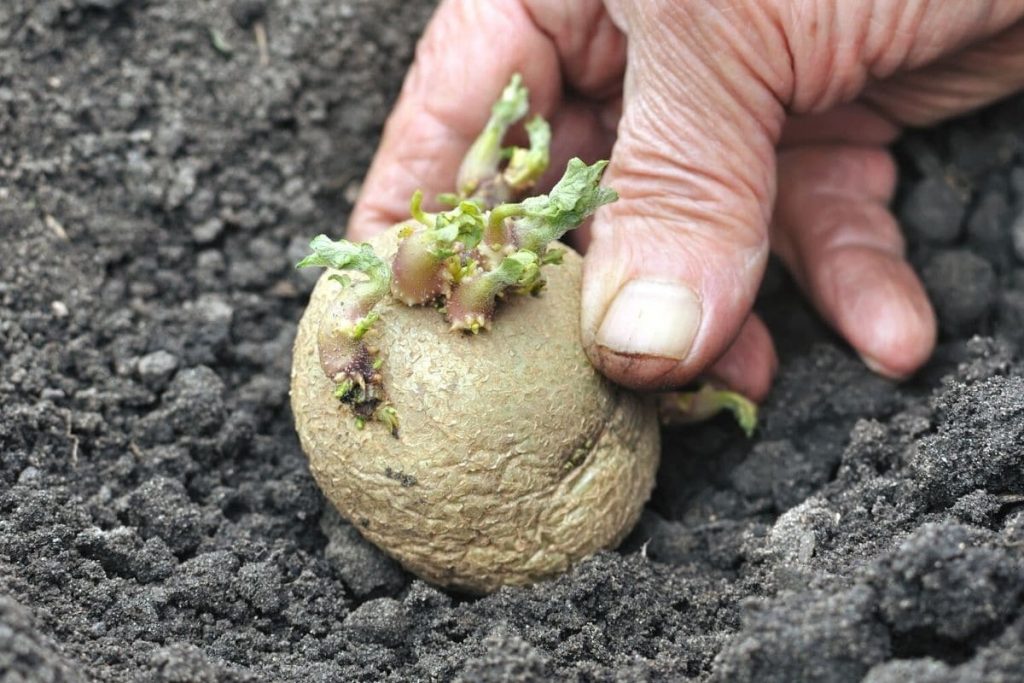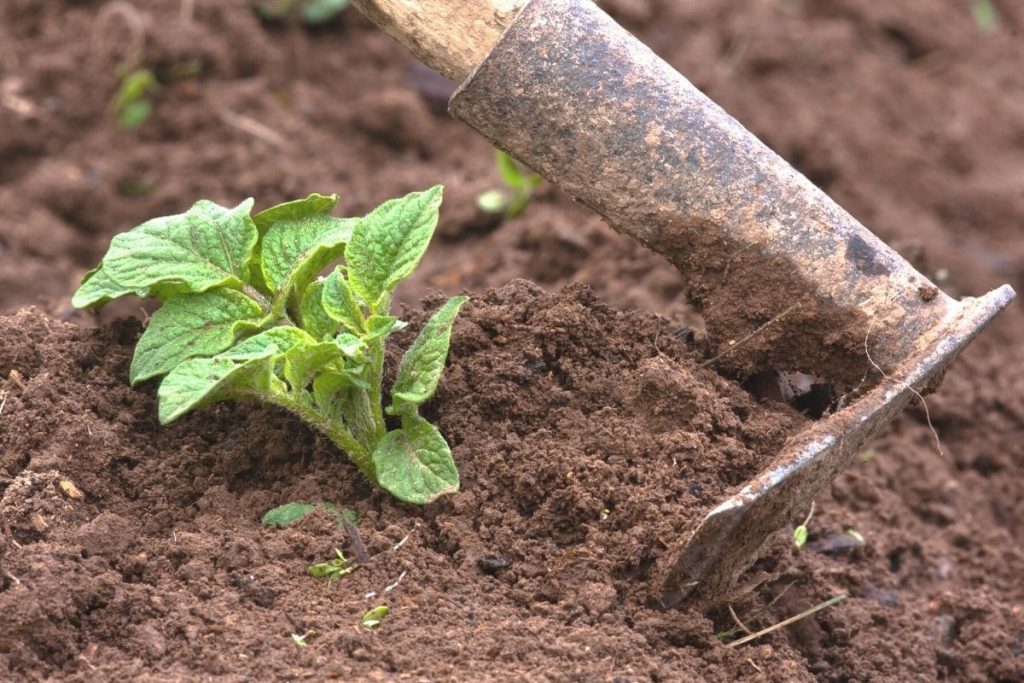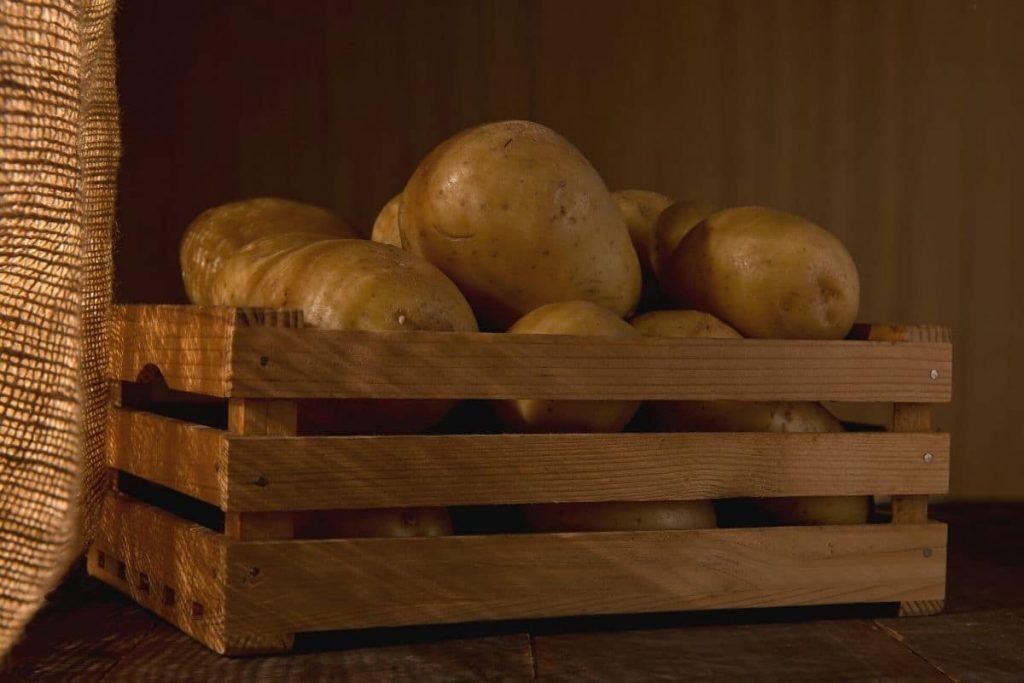Contents
- 1 Growing potatoes in a raised bed
- 2 pre-sprouting
- 3 Planting
- 4 care
- 5 mounding
- 6 harvest
- 7 storage
- 8 Advantages of growing potatoes in raised beds
- 9 Frequently asked questions
- 10 How should a raised potato bed be oriented?
- 11 Which plants are suitable for mixed cultivation with potatoes in a raised bed?
- 12 Can you build a raised bed yourself?
- 13 How do I fill a raised bed correctly?
- 14 Author
Growing potatoes in a raised bed
With these step-by-step instructions, growing potatoes in a raised bed is a breeze.
Tip: It doesn’t always have to be the standard raised bed. Whether it’s an inexpensive version made of wooden frames, a solid aluminum construction or a design product made of weathered rusty steel, the selection of modern raised beds is huge.
pre-sprouting
Pre-sprouting seed potatoes is not mandatory, but it makes it easier to get started and shortens the time to harvest. Pre-sprouted potatoes develop better and are more resistant to diseases and pests.

Allow the seed potatoes to pre-sprout four to six weeks before sowing. Add some finely sifted compost mixed with sand to an egg carton. Place the tubers in the wells so that the side with the most eyes is facing up. Add the rest of the substrate mixture between the tubers.
Place the boxes in a bright, frost-free room. A room temperature of 15 degrees Celsius is excellent for forcing.
Note: As an alternative to the seed potatoes offered in stores, you can use organic potatoes. Unlike ordinary table potatoes, these are not treated with sprout stop.
Planting
Plant the well germinated potatoes in April or May in the top soil layer of the raised bed.
- Germination length at planting time: about three to four centimeters
- Dig 15 centimeter deep holes in bed surface
- Spacing 20 to 25 centimeters
- Insert tubers individually into holes with germ upwards
- Optimal distance to the edge of the raised bed: 10 to 15 centimeters.
- Finally, cover the tubers with crumbly vegetable or compost soil.

Tip: Do you know the old country saying: “If you lay me down in April, I’ll come when I want. If you lay me in May, I’ll come right away…”?
care
Potatoes belong to the plants that have a high demand for sun, nutrients and water. Only in this way can form large, delicious tubers. Water the raised bed with potatoes best in the early morning hours. Remove weeds regularly and loosen the soil every now and then.
Note: Additional fertilization during the growing season is not necessary.
mounding
Potato plants should also be mounded regularly when grown in raised beds. When the first green leaves are visible after four to five weeks, cover the plants completely with soil again. Repeat the mounding every two weeks. In this way, new roots are formed, so that many tubers can be formed. When the top edge of the raised bed is reached, let the plants grow. In this way, in the 40 centimeter thick layer can develop many delicious tubers.

Note: Simply give the raised bed soil to the compost. Together with other materials it becomes new humus again. You can also use the fill as an intermediate layer when building the next raised bed.
harvest
Depending on the variety, the potato harvest takes place between July and September. When the leaves wilt, soon is the right time to harvest. Allow the tubers to ripen in the ground for two weeks after the foliage dies.
Very carefully dig the tubers of potatoes out of the raised bed. Use primarily your hands or blunt shovels to do this. Pointed tools can damage the delicious tubers.
Note: The harvest yield of potatoes is about nine to twelve times the initial amount.
storage
Potatoes will keep for several months if protected from light and moisture. Remove coarse dirt from freshly harvested tubers. Choose a dark, cool place in the cellar. The ideal storage temperature is 4 to 6 degrees Celsius. Layer the potatoes in an airy wooden crate. Alternatively, you can use jute bags or canvas bags. If potatoes nevertheless begin to sprout, you should consume them quickly.

Note: Do not store potatoes near apples. The ethylene given off by apples will cause the tubers to spoil faster.
Advantages of growing potatoes in raised beds
- Chance to create perfect growing conditions in a small area
- defense against voles and pests
- layer of brushwood protects against waterlogging
- Slowly decaying compost provides continuous nutrients
- back-friendly work possible
Tip: To protect against voles, you should lay a close-meshed wire mesh on the ground before filling.
Frequently asked questions
How should a raised potato bed be oriented?
Align your bed in a north-south direction. This way the sunlight is optimal. Potatoes need a lot of sun to grow tasty large tubers.
Which plants are suitable for mixed cultivation with potatoes in a raised bed?
Excellent plant neighbors are caraway, coriander, garlic, nasturtium. Simply plant them between the potatoes.
Can you build a raised bed yourself?
With a little craftsmanship, you can build your own raised potato bed in a few steps from old wooden pallets. To do this, tie four pallets together with wire to form a square. Design the raised bed only so large that you can easily work all areas.
How do I fill a raised bed correctly?
Fill the raised bed in different layers. First a layer of small branches, twigs and pieces of bark for good ventilation and against waterlogging. This is followed by shredded wood. Afterwards you fill coarse, half-rotten compost and mix foliage under it. In this way, the nutrient supply is guaranteed. After a layer of fine compost, a thick layer of sieved compost soil (or vegetable soil from the specialized trade) forms the final layer. The soil layer ends at least forty centimeters below the top of the frame.

